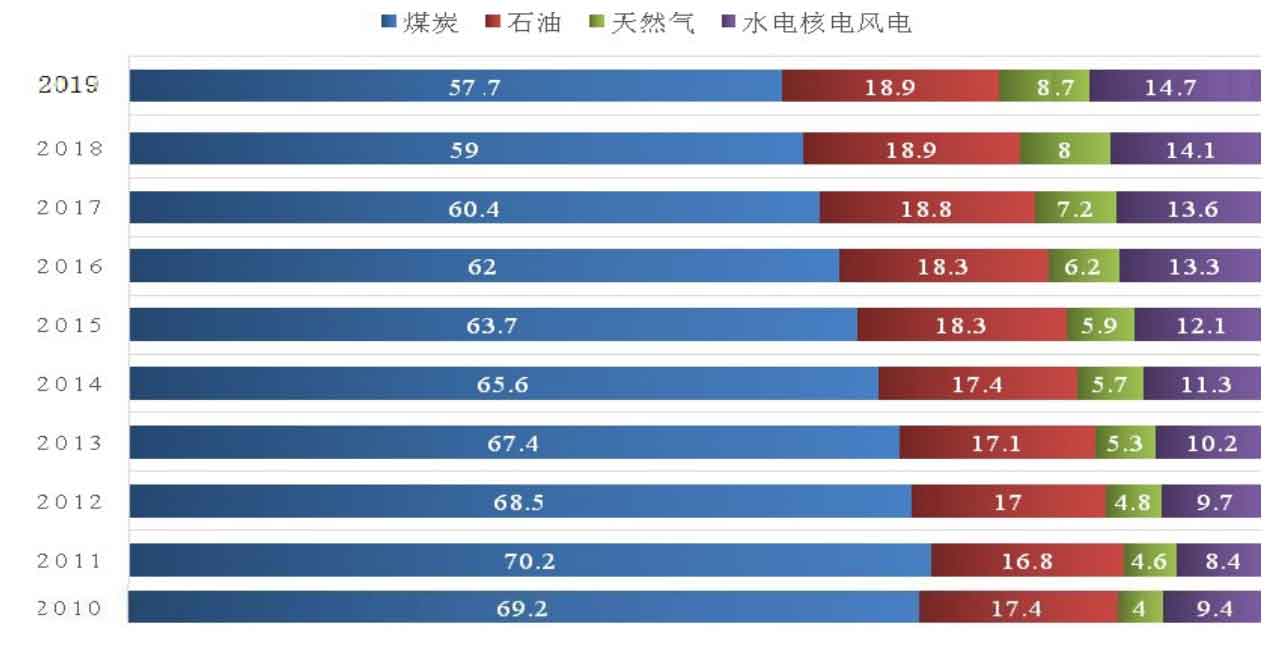The development and utilization of energy runs through the history of human society. The energy structure utilized by humans mainly includes resource depleted energy sources such as firewood, coal, oil, and natural gas, as well as clean energy sources such as hydropower, wind energy, solar photovoltaic, and ocean energy. The rapid development of modern society and economy is most prominent in the constantly growing demand for energy. In the process of energy utilization, the energy tension and environmental pollution caused by fossil energy such as coal, oil and natural gas have become increasingly prominent, which has gradually affected and even restricted the development of the global economy. Therefore, renewable clean energy is becoming the core of the world’s energy transformation. From January to September 2021, China’s household solar photovoltaic installed capacity increased by 11.7 GW, a year-on-year increase of 121.4%, accounting for 45.7% of the new installed capacity, surpassing centralized power stations. The demand driving ability of household solar photovoltaic is highlighted. On June 20, 2021, the National Energy Administration officially issued a notice on submitting a pilot plan for the development of distributed solar photovoltaics on rooftops in the entire county (city, district), which clearly stated support for the development of distributed solar photovoltaics in China. China has a large rural population and a large development market space. The current roof penetration rate is about 1.8%, and the installed capacity is vast, ranging from 1200GW to 2200GW. It is estimated that the annual increase in household installed capacity from 2022 to 2025 will be 34%, leading the solar photovoltaic industry. After years of development, the solar photovoltaic industry has become one of the few strategic emerging industries in China that has gained international competitive advantages.
The comprehensive utilization technology of solar photovoltaic technology for household use in cogeneration will greatly improve the quality of life of people in rural areas, especially in remote areas, with broad application and development prospects. At the same time, it plays a positive role in promoting the achievement of carbon peak and carbon neutrality.
1. Energy production and structure in China
As shown in Figure 1, the data on China’s total energy production and growth rate provided by the National Bureau of Statistics shows that in the past decade, China’s total energy production has mainly continued to grow slowly, with only a slight decrease in 2016. Since 2017, it has resumed steady growth, and in 2019, the total energy production has reached a historical high. In terms of growth rate, it reached as high as 9.1% in 2010. In 2012, the growth rate significantly decreased, dropping sharply by 5.8%. In the following four years, it continued to decline, and by 2016, the growth rate had reached the lowest of -4.2% in nearly a decade. In 2017, the growth rate rebounded significantly to 3.6%, and in the past two years, the growth rate has remained stable at 5% and 5.1%, still lagging behind the high growth rate in 2010. In terms of energy production structure, traditional energy production in China is mainly based on raw coal, crude oil, and natural gas. In 2019, China’s raw coal production reached 3.85 billion tons, a year-on-year increase of 4.0%. The crude oil production was 190 million tons, a year-on-year increase of 0.9%. Natural gas production reached 176.17 billion cubic meters, a year-on-year increase of 10.0%. The power generation reached 7503.43 billion kilowatt hours, a year-on-year increase of 4.7%.
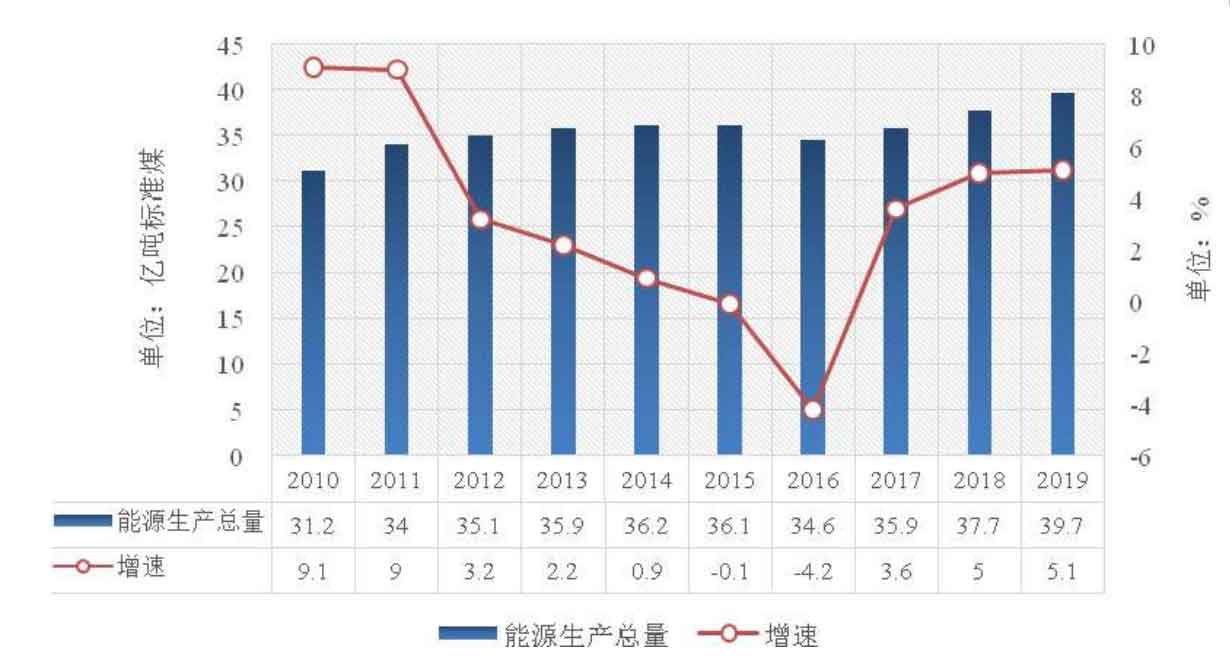
In the past decade, China’s raw coal production has remained relatively stable. After four consecutive years of continuous growth from 2010 to 2013, it began to decline in 2014 and reached its lowest level of 3.411 billion tons in a decade in 2016, which is basically the same as the production in 2010; Starting from 2017, the production of raw coal gradually recovered, and the production in 2019 was roughly equivalent to that in 2014. After a slight increase in crude oil production between 2010 and 2015, there was a significant decline in 2016, falling below 300 million tons of standard coal. The decline continued in 2017 and 2018, but narrowed in 2018. In 2019, the growth rate of crude oil production changed from negative to positive, reversing the trend of three consecutive years of decline since 2016. Natural gas has maintained continuous growth over the past decade, with an increase of over 10 billion cubic meters in three consecutive years. The production of unconventional natural gas such as tight sandstone gas, shale gas, and coalbed methane accounted for over 30%, an increase of 23.0%, driving a 6.9 percentage point increase in total natural gas production.
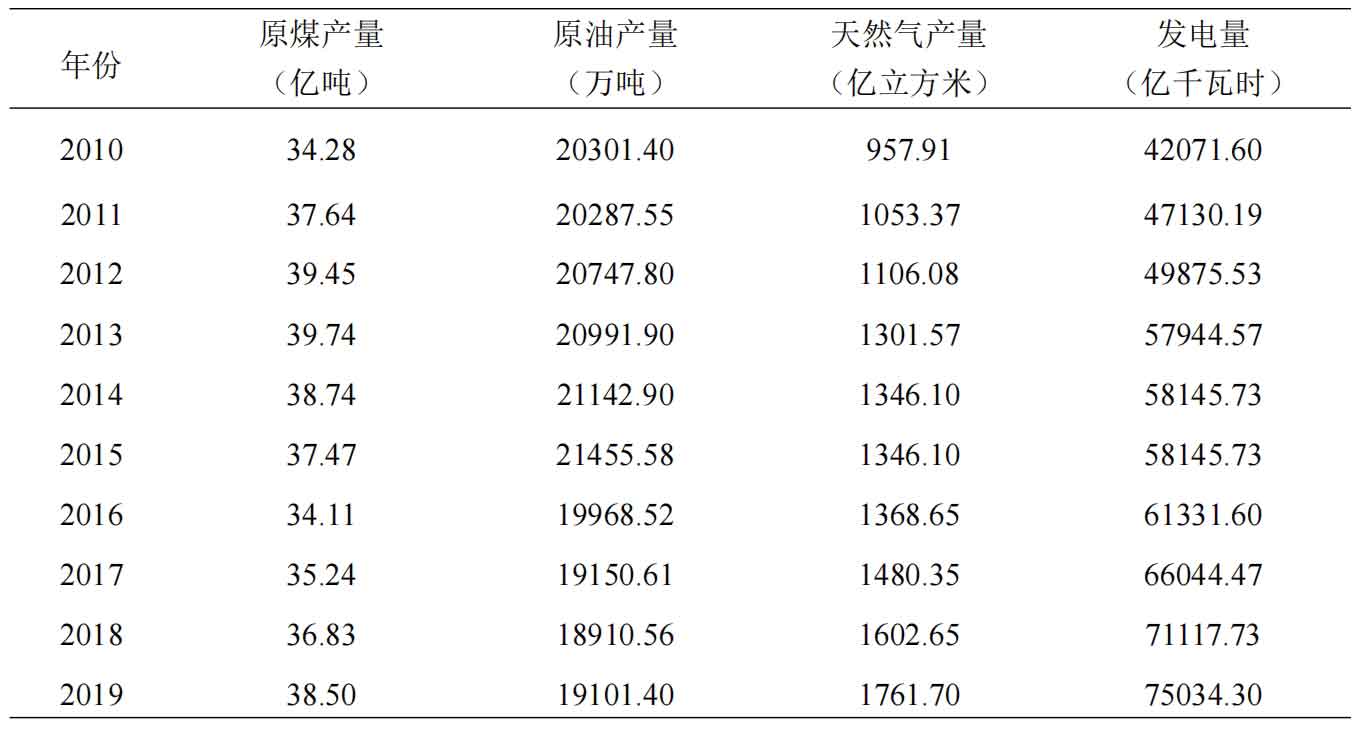
China’s electricity production has steadily increased over the past decade, with a total power generation of 7503.43 billion kilowatt hours, a year-on-year increase of 4.7%; Thermal power generation reached 52.2015 billion kilowatt hours, a year-on-year increase of 2.4%; Hydroelectric power generation reached 1304.44 billion kilowatt hours, a year-on-year increase of 5.9%; Nuclear power generation reached 348.35 billion kilowatt hours, a year-on-year increase of 18.3%.
With the acceleration of energy transformation, China’s energy structure continues to optimize. In China’s energy production structure in 2019, raw coal accounted for 68.8%, crude oil accounted for 6.9%, natural gas accounted for 5.9%, and hydropower, nuclear power, and wind power accounted for 18.4%. In 2020, the proportion of clean electricity production significantly increased. In the first three quarters, the proportion of primary electricity production in industrial hydropower, nuclear power, wind power, and solar photovoltaic power generation above designated size accounted for 29.2% of the total electricity generation, an increase of 0.9 percentage points compared to the same period last year. In September, the proportion of primary electricity production was 33.1%, an increase of 3.4 percentage points from the same period last year. The proportion of clean energy consumption has steadily increased. Preliminary calculations show that the proportion of clean energy consumption such as natural gas and primary electricity in the total energy consumption in the first three quarters increased by 0.6 percentage points compared to the same period last year, while the proportion of coal consumption decreased by 0.5 percentage points.
2. Energy consumption and utilization in China
In recent years, China’s total energy consumption has continued to rise. As shown in Figure 2. In 2019, there was an increase of 1.25 billion tons of standard coal compared to 2010. In 2019, the total energy consumption was 4.86 billion tons of standard coal, an increase of 3.3% compared to the previous year. Coal consumption increased by 1.0%, crude oil consumption increased by 6.8%, natural gas consumption increased by 8.6%, and electricity consumption increased by 4.5%.
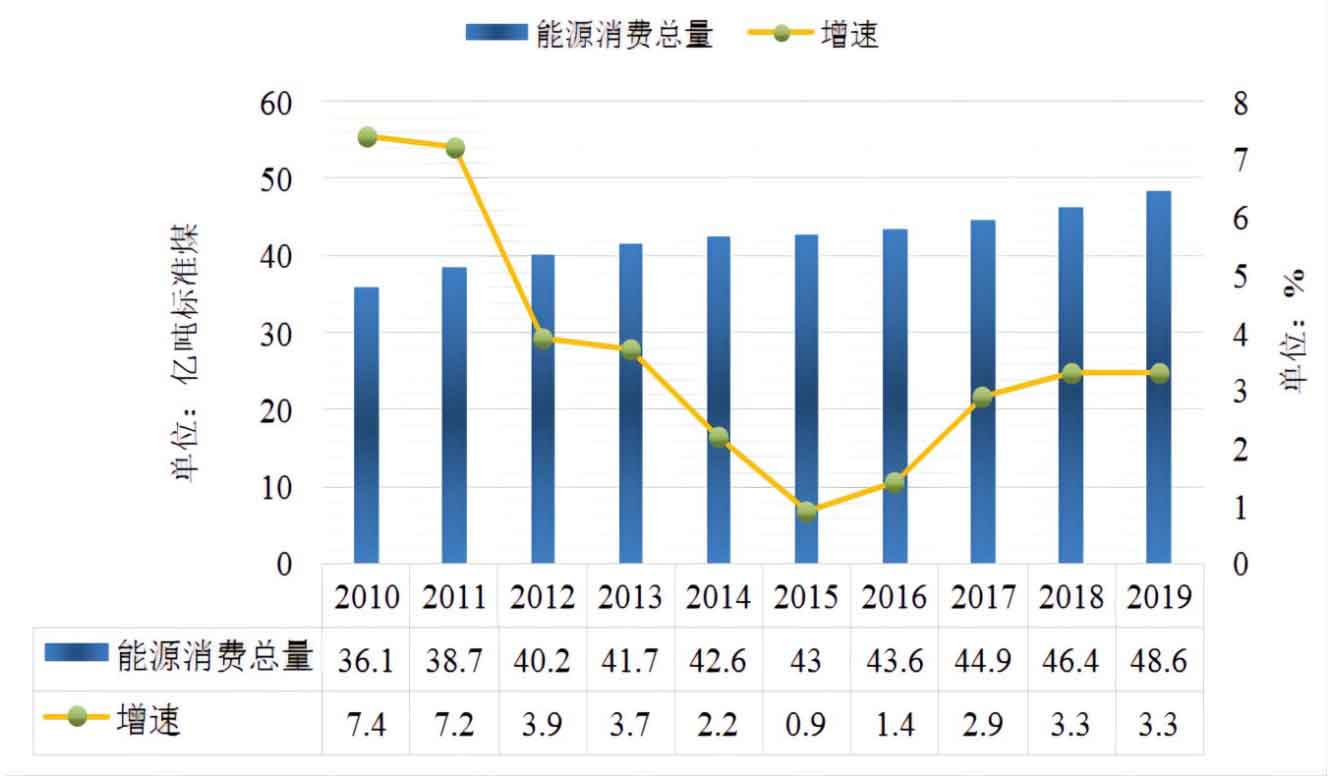
From the perspective of the growth rate in the past decade, the energy consumption growth rate in 2015 has continued to decline by 6.5 percentage points compared to 2010. Starting from 2016, the growth rate has turned upward, reaching 3.3% in 2019. However, compared with the high growth rates in 2010 and 2011, the total energy consumption since 2012 has been in a low-speed growth state, supporting the medium to high-speed development of the economy with lower energy consumption, as shown in Figure 3.
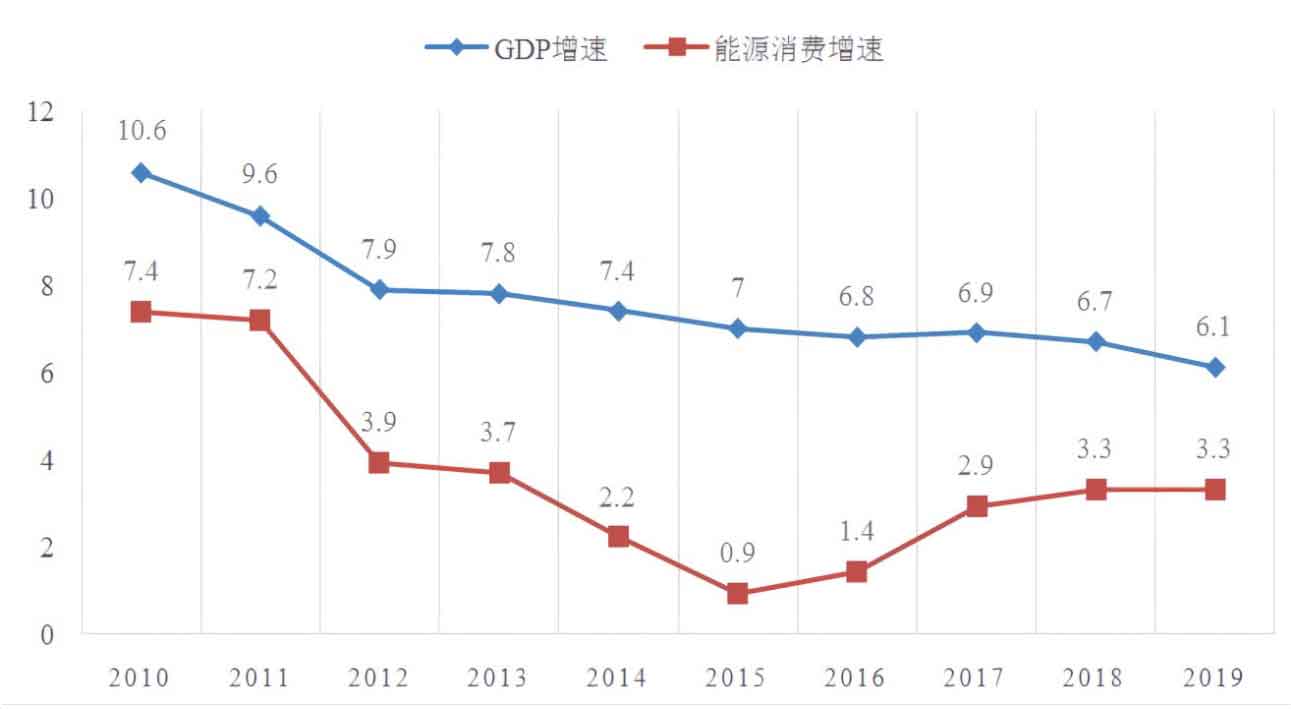
In the past decade, China’s energy consumption structure has been further optimized. From the energy consumption structure data in Figure 4 this year, it can be seen that the proportion of coal consumption is on a downward trend, dropping to below 60% in 2018, but it is still the main source of energy in China in the short term. The proportion of clean energy consumption in the total energy consumption has increased from 13% in 2011 to 23.4% in 2019, almost doubling. In general, coal plays a dominant role in China’s energy composition, oil and natural gas are highly dependent on foreign countries, and the proportion of clean energy consumption continues to increase.
